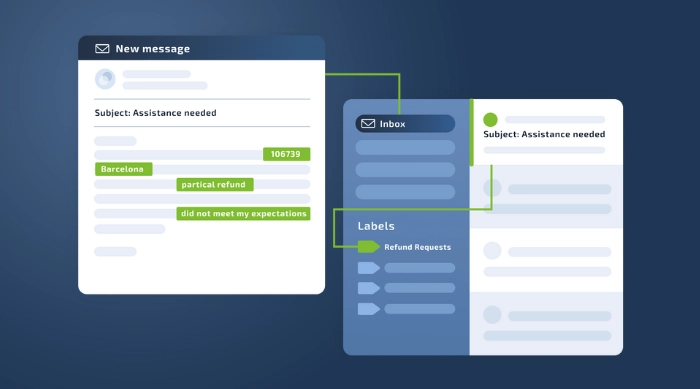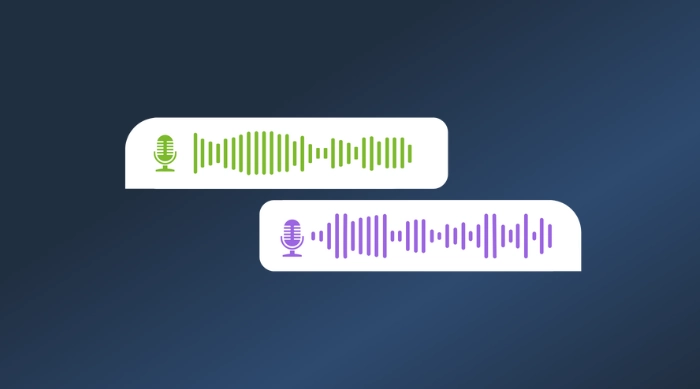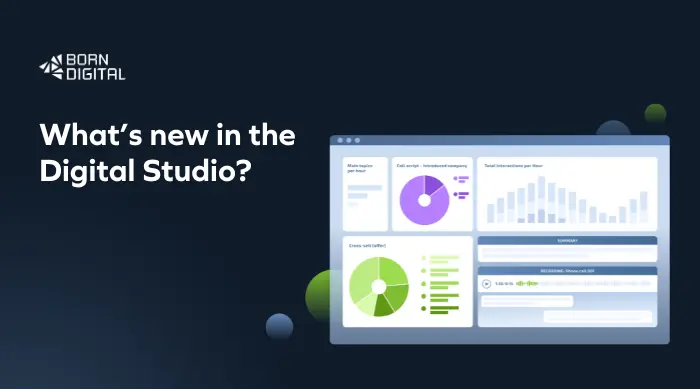AI-powered Email Management Automation

Introduction
Despite email being the preferred customer service channel for many customers, businesses often struggle to manage email inquiries quickly and efficiently. The financial consequences of delayed responses and resolutions are becoming increasingly more significant, and this underscores the critical need for email automation solutions. Among the biggest pain points of managing emails are:
1. Having to manually categorize emails to determine which team to direct the queries to.
2. Delayed response times due to a large number of incoming emails and/or the lack of 24/7 availability.
3. Inconsistent responses due to varying levels of knowledge and training.
4. High costs of staffing a team to handle email support, especially as the volume of inquiries grows.
5. Handling complex or multi-intent emails can be challenging and time-consuming for agents.
Born Digital’s AI-powered email automation solution addresses these pain points by providing effective email-based support leading to an improved customer experience.
AI email automation for better efficiency
The solution leverages generative AI to autonomously handle 80% of incoming email queries, ensuring quick and accurate responses around the clock. Seamlessly supporting multiple languages, it integrates with Born Digital’s omni-channel customer service platform, delivering a comprehensive and personalized support experience.
Powered by Large Language Models (LLM), AI Email Automation is able to understand complex, unstructured emails and accurately identify multiple intents and infer the object and urgency of the email. Taking it a step further, it identifies the user and delivers a contextual response grounded in user insights, reducing ticket volumes by up to 80% and improving first contact resolution by up to 20%.
Streamline email handling
Born Digital’s email automation can self-serve up to 80% of incoming emails, significantly reducing operational costs by up to 60%, and cutting ticket volumes by 85%, leading to a 20% improvement in first contact resolution (FCR).
Advanced email understanding
Powered by Large Language Models (LLMs), Born Digital’s solution comprehends complex, unstructured emails, identifies multiple intents, and recognizes urgency and sentiment. This sophisticated understanding allows businesses to provide accurate and contextually relevant responses quickly.
Automated workflow triggering
This feature automates workflows by identifying the intents within emails, directing them to knowledge bases, escalating to the relevant teams, or transferring to agents for complex issues. Automating these processes ensures businesses can resolve queries promptly and efficiently.
Empathetic, personalized resolutions
Born Digital tailors responses by cross-referencing CRM data, detecting user sentiment, and following company guidelines. This approach ensures that each interaction is personalized and considerate, fostering stronger customer relationships.
Categorize and prioritize emails you receive
Seamless transition to human agents is ensured, with AI suggesting responses and triggering transfers when negative sentiments are detected, maintaining a human touch for complex queries. Agents are equipped with suggested responses, enabling quicker and more effective resolutions.
Easily integrate with existing systems
The solution integrates seamlessly with existing ticketing and CRM systems, ensuring contextual and efficient responses by leveraging customer insights from previous interactions. This integration helps in maintaining a coherent and comprehensive support system.







